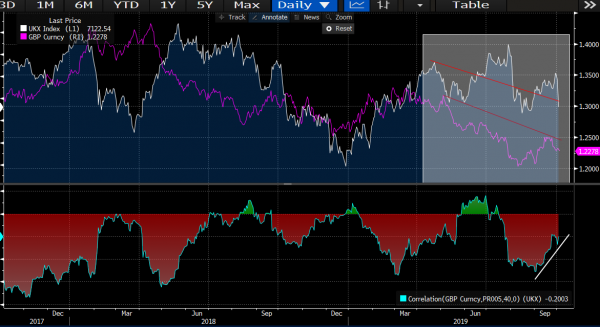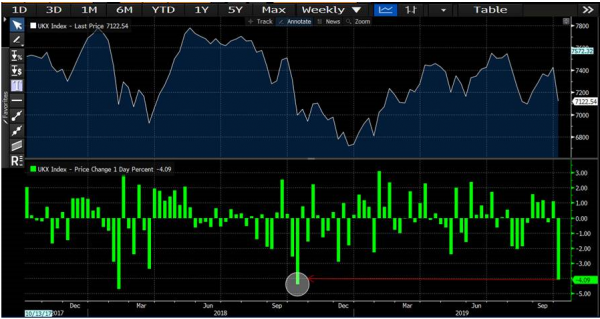The UK is due to exit the EU on October 31st and the British Prime Minister, Boris Johnson has made it clear that he is determined to take the UK out of the EU without any further extension. Mr. Johnson has revealed his alternative plan to Irish backstop yesterday and he is confident to secure enough support in the UK Parliament today. He needs to convince Eurosceptics to get this deal over the line. The biggest risk is that if he fails to secure enough backing from the parliament and the EU, an accidental no-deal Brexit is the only option. Leaving the EU without any deal will disrupt the business supply chains. This simply means more pain for the economy and the UK benchmark index: the FTSE 100.
The index has suffered the largest weekly drop (over 4%) since October 2018 so far this week. The index is down nearly 7% from its recent high of 7,727 formed on 30th of July, but it is still up 5.86% year-to-date. The index hasn’t seen this kind intensive daily drop since August. Between August 2nd (Friday) and August 5th (Monday), the index lost nearly 385 points, and yesterday, it lost 238 points. This leads us to believe that the sell off is much more intense this time due to Brexit fear. The index has still a long way to test the Brexit low: 5,499 or in other words, a 29% drop.
The interesting element is that we still have 2 more trading days left and it is likely that the current would continue. Investors used to be confident that the weakness in Sterling would lead to a rally for the index. The reason for this was that there used to be a negative correlation between Sterling and the FTSE 100 index. However, that correlation trend has changed its direction meaning weakness in Sterling doesn’t push the Footsie 100 up anymore as shown in the chart below. 













